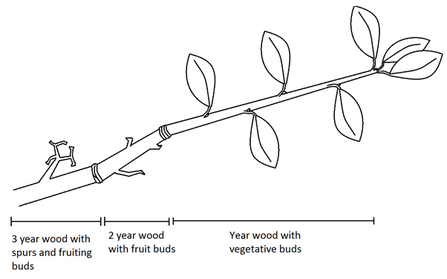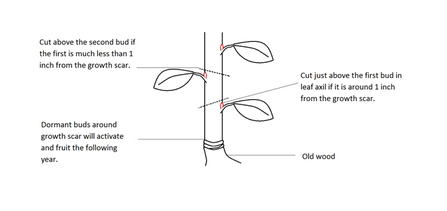Fruit tree pruning may be considered by some to be an art form, but how you prune depends mainly on the age of your tree. If your trees are still young, they will need some formative pruning in the winter to achieve an open network of branches. For trees that already have an established framework of branches then winter pruning is necessary only to maintain the shape and balance. Veteran trees require a little more know-how and there are some very informative videos on-line if you want to restore old fruit trees.
Whenever you prune in winter, it encourages new growth the following year and if you were only ever doing this then your trees would become dominated by vegetative growth with very little fruit. Summer pruning is essential because it removes overcrowded and vigorous new growth on your trees and increases the quality of fruit, which of course is why we grow them in the first place.
August is the perfect time of year to summer prune, and though there are regional variations, the tree will tell you exactly when it is ready, this is the point at which ¾ of the new growth for that year has been ‘set’ and are no longer juvenile in their appearance. New stems or branching are no longer fluffy and green but have become more woody brown and rigid, and those young lime green leaves have developed a more shiny waxy appearance much like the older leaves on the tree.
The below text and diagrams are from the Traditional Orchards pages on the Peoples Trust for Endangered Species website, a fantastic resource for orchard management. They also have some brilliant videos on pruning.
How to summer prune apple and pear trees
Unlike winter pruning, where more choice and judgement are utilised, summer pruning has a fairly rigid set of principles to follow. In most scenarios you are pruning year old growth and either cutting it out entirely, using it to extend an existing fruit spur or create a new spur system. Older growth should generally be pruned as part of your winter pruning, which will encourage regrowth the following year.
First find your year-wood, do this by following down a newly grown twig from the tip; the point at which the bark changes and there is a ridged banding in the bark is the point at which it started growing after the winter dormancy.
Cut out vigorous one year growth
Cut out vigorous one year growth unless it is suitable for extension or replacement (aka. renewal) framework branches. In open-centred trees particularly make sure to cut out any young growth from the centre of the tree.



